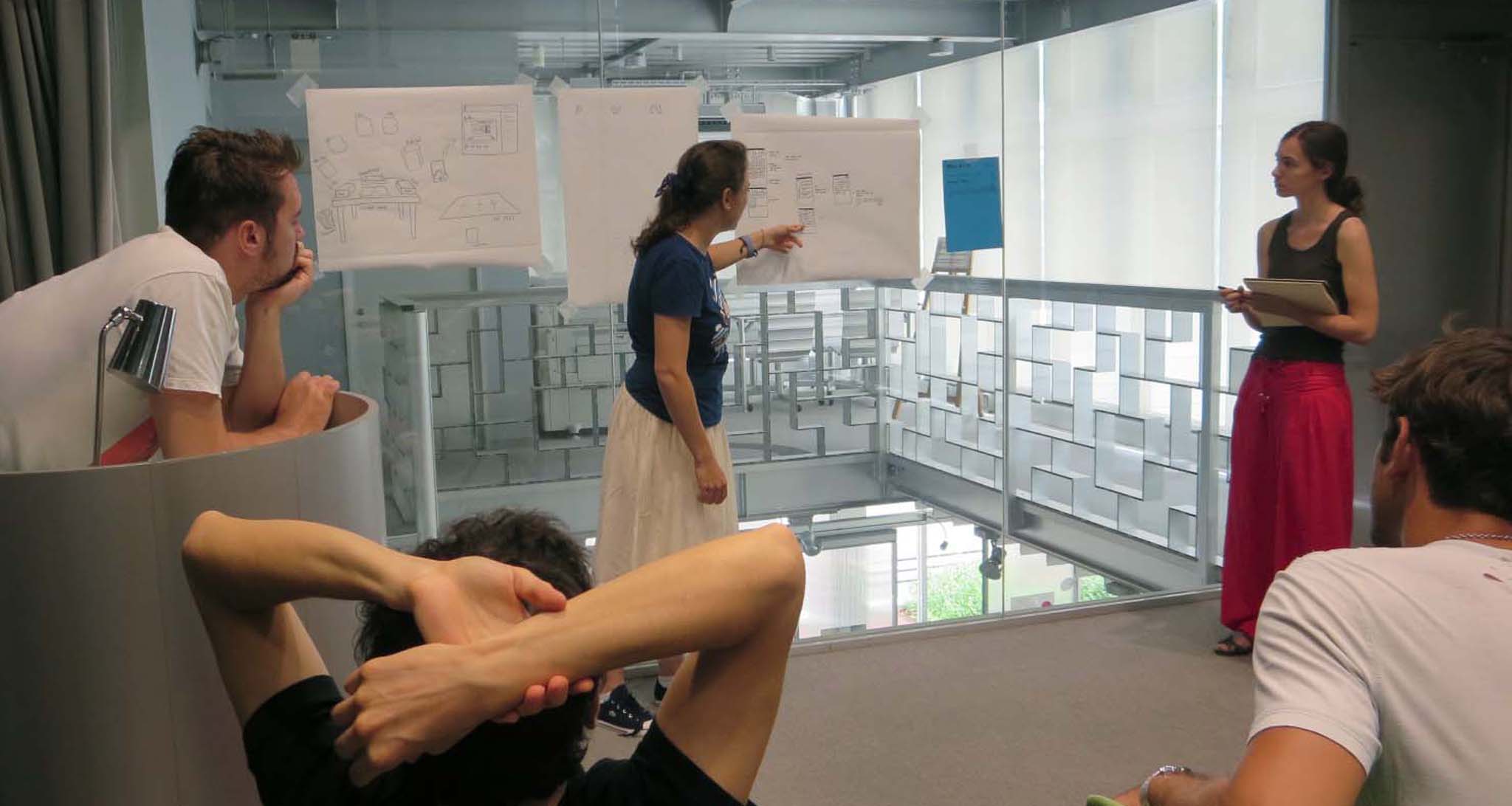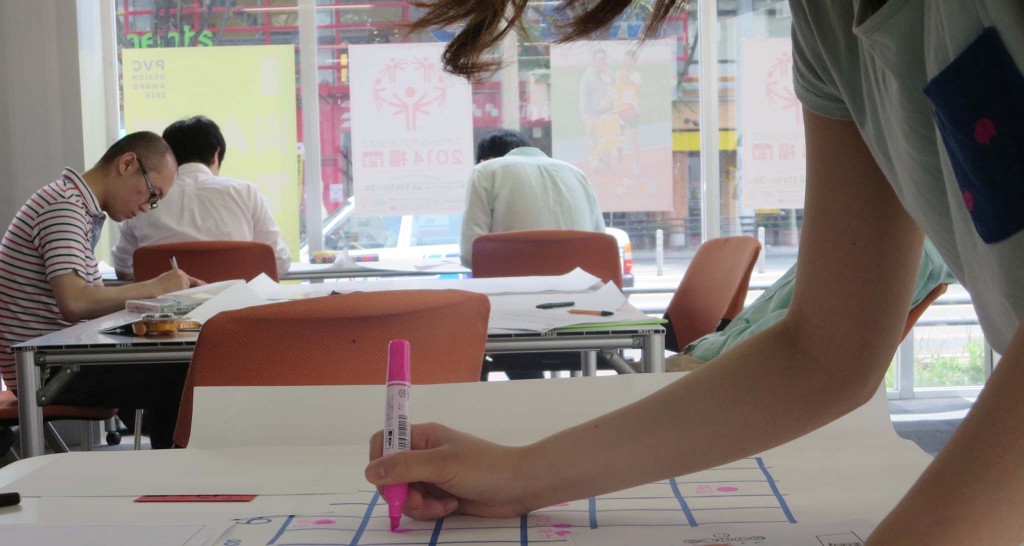 More photos from the workshop.
More photos from the workshop.
Couple of weeks ago, we held the first workshop with students for the Square1 software / harware prototype. The objective of the workshop was to explore how the Square1 prototype may support self-organized and collaborative learning. The workshop was inspired and based on the self-organized learning environment (SOLE) experiment by Sukata Mitra.
Square1 is a single task dedicated learning devices designed for group work in schools and consists of 5 touch screen devices; in this case 4 devices for writing texts and 1 central device for making internet searches and aggregating, arranging and presenting notes from the writing device. The hardware prototypes of the writing devices had a keyboard and a screen encased in a single box.
Software prototype
The Square1 software prototype was built as a browser app. With the app one can create a ‘study room’, that can be entered in two modes: a writing mode for the writing devices and a canvas mode for the central device where the written texts are submitted and arranged as notes. The canvas mode also contained a button for switching to a searching mode where internet searches could be made through Google or Wikipedia.
Participants
The workshop was held with four, grade six pupils aged about 12 and lasted about an hour and a half. In the workshop, each pupil was assigned a device for writing texts and the central device was to be used together for making internet searches and aggregating and arranging the written texts for presentation.
Learning task
The pupils’ task for the workshop was to find out possible answers to the question:
“Why do things fall downwards and not upwards or sideways?”.
Data collection
Since we were interested in the pupils’ first impressions with the prototype and the interactions and experiences that would happen during the task, we captured the entire workshop on video and audio. Furthermore we conducted open-ended interview with the pupils and their teacher who was observing with us students work with the task.
Preliminary outcomes
We experienced some problems with the prototype during the workshop; the central device functionality for arranging the written texts (from the writing devices) partly failed. As a result, the written texts were aggregated in the central device but they could not be arranged for the presentation purposes.
We later found out that the problem was a result of the submission of about 800 empty text pieces to the central device. In practice pressing “enter” in the writing devices was posting enpty notes to the canvas. This slowed down the central device’s software to the point where it became unresponsive. The bug has been fixed.
By observing and from the open-ended interview we concluded that the writing devices should come with a functionality of flipping the view to have the same search tools available that are in the central canvas. In the prototype tested the search functionality was accessible only through the central device with the intention of looking at how pupils would discuss and agree on when and what to search. Observations we made in the workshop suggested that discussion and collaboration on searches would still take place even when the search functionality would also be accessible through each individual the writing devices.
We are now taking a closer look of the data gathered. it looks, however, that the Square1 prototype is ready for more testing in schools. During the summer we are also working with the hardware design, so that it becomes possible for people to assemble their own set of Square1 devices. It’s going to be an exciting autumn.
What did the students learn?
This is a tricky question. While searching answer(s) to the questions students found out that the issue is related to gravitation but were not able to properly explain it. The explanation given was that everything goes to the center of the earth and therefore things fall down. In their search of information they were very source critical and discussed about the reliability of the information they found. During the follow-up interview we discussed more about phenomena and we may assume that after that students did have a better and more correct idea about it than before the workshop.





